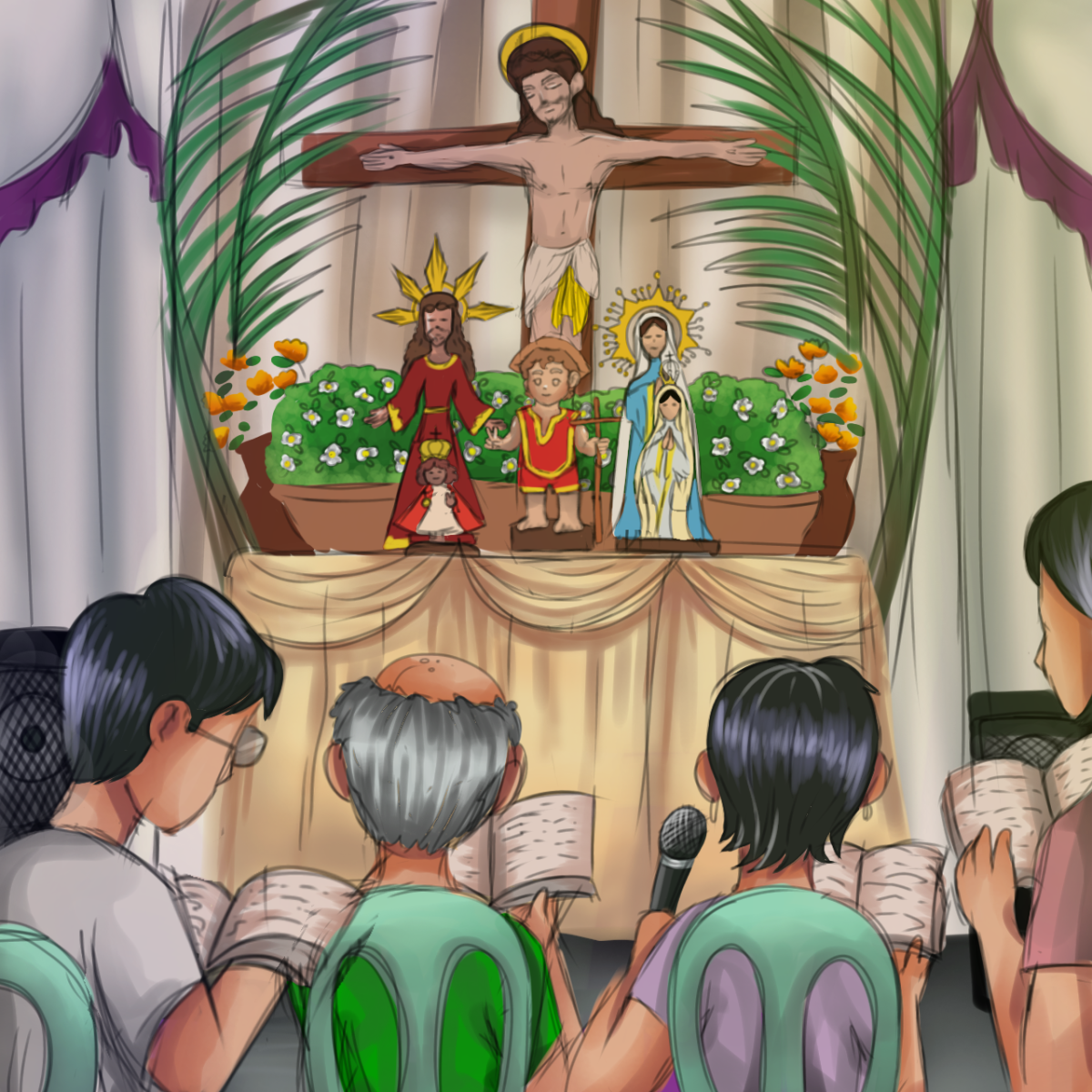Holy Week, or Semana Santa, is a deeply sacred week of the year for Catholics around the world. And Lyn, our Bulacan site director, believes that her community holds it closer to their hearts than anywhere else.

Their week of traditions and devotions begins on Palm Sunday. Families go to church wearing their finest clothes, carrying palm leaves, or palaspas, for blessing. (If they don’t have one, vendors out front will gladly sell you one). After Mass, the faithful enter a week of fasting and abstinence, avoiding vices like drinking, social media, and video games. They also fast from meat and favourite treats like pizza.
Immediately after Mass, or at least that afternoon, families will gather in each other’s homes for the unique tradition of Pabasa. In this, the families sing or chant the Pasyong Pilapil, a long Tagalog-language poem about Jesus’ life. It takes about four hours to sing, so some families break it up over the week, while others sing through it one go, surrounded by their families and neighbours.
“More often than not, food will be plentiful during Pabasa, as it is at any other Pinoy event,” says Lyn, using a common adjective Filipinos use for their culture. “Steaming bowls of lelut (rice porridge with hard-boiled egg) and a never-ending supply of coffee will keep you up and energized while you belt in out on the microphone.”
“Hearing the old voices singing so passionately from a distance seems unsettling and soothing in the silence of the night.”
On Holy Thursday and Good Friday, many families continue a tradition begun by St. Philip Neri in the 1500s.
Known as Visita Iglesia, they visit at least seven different churches, ideally in groups of friends and families.
“The goal of Visita Iglesia is to pay homage to the Blessed Sacrament and seek atonement for one’s sins,” Lyn says. Many also weave in the Stations of the Cross, a devotion that remembers 14 moments of Christ’s Passion. Praying two stations at each of the seven churches fulfills all 14 stations. Making your visits with a group of friends and loved ones, Lyn says, takes some of the penitential sting out of the long hours walking and praying.
On Good Friday, they attend the Senakulo, a dramatic re-enactment of the Passion narrative. Mary, Pontius Pilate, and the Apostles all play key roles. It’s “typically a community effort that requires months of preparation,” Lyn says. “In some places, the Senakulo may span seven or eight evenings, starting from Palm Sunday and ending on Easter Sunday.” For simplicity’s sake, some offer a one-night version on Friday, which lasts up to four hours.
Finally, Easter Sunday arrives. Before dawn, they hold one more tradition: Salubong. This procession commemorates the moment the Risen Christ meets the Virgin Mary. Two processions, composed of different families or community groups, start walking from two opposite points on either side of their parish church. Each carry an image of either Jesus or Mary. The highlight is when they meet out front of the parish. The children sing and dance, and then everyone heads inside to sing their long-awaited Hallelujahs on Easter morning.
